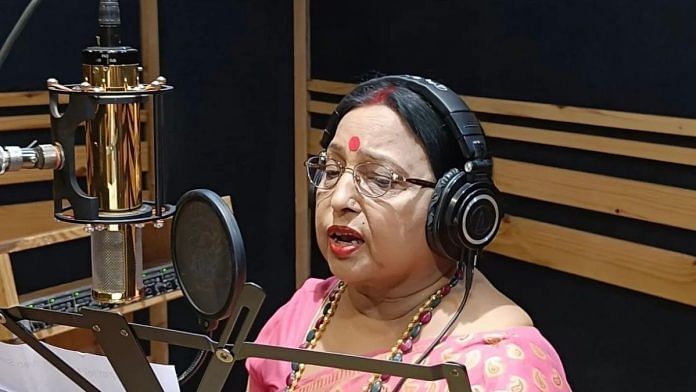Growing up in Delhi, I wasn’t very familiar with Bhojpuri or Maithili culture. Sharda Sinha, who died on 5 November, changed that with Kahe Tose Sajna, a popular song from Salman Khan’s 1989 hit film Maine Pyar Kiya.
I was an impressionable 13-year-old in the 2010s, mostly consuming popular songs like Himesh Reshammiya’s Jhalak Dikhlaja. But Kahe Tose Sajna was my introduction to romance and the articulation of intimacy. You can say it was my coming-of-age song.
The song’s folk music element captured my attention. Her voice felt so familiar–almost as if my grandmother was singing to me, and I was home. The rawness and melody of Sharda Sinha’s songs made me fall in love with her. From Kahe Tose Sajna to Taar Bijli Se Patle Humare Piya in Gangs of Wasseypur-Part 2 (2012), her songs very quickly became a staple in my playlist.
She introduced me to the world of Bhojpuri folk music, where nothing was vulgar and artistry reigned supreme.
While it’s overshadowed by bawdy songs today, Sinha showed me the hidden gems.
Her influence extended beyond Chhath Puja, which is incomplete without her devotional songs. She sang for weddings, childbirths, and even the unique festival of Sama Chakeva, which celebrates the bond between brothers and sisters.
Guardian of Bihar’s music
I had the chance to meet Sharda Sinha at an event a few years ago, where she candidly shared her journey with the audience. When she told us that she began her singing career by performing at her brother’s wedding, it struck a chord with me. My first public performance was singing with a dholak at my brother’s wedding.
What amazed me the most, perhaps, was her devotion to folk music, which even seeped into her mainstream Hindi songs. Despite making it to Bollywood with Kahe Tose Sajna, Taar Bijli, and Kaun Si Nagaria (2014), she remained committed to her roots, singing traditional songs in Bhojpuri, Maithili, and Magahi.
In my family, women gather to sing folk songs at weddings, often playfully teasing each other through them. Every time we have such a gathering, I sing Taar Bijli, and, without fail, it makes me the star of the night.
One of Sharda Sinha’s songs that truly captivated me was Sama Khele Chaleli, about the festival of Sama Chakeva, where sisters make clay dolls for their brothers. And it was through this song that I first learned about this beautiful tradition. I also loved Saiya Tohre and Apna Balama, where she captured a village woman’s feelings for her husband.
On one side there’s a booming pop Bhojpuri industry, exemplified by songs like Lagai De Choliya Ke Huk Raja Ji and Lollipop Lagelu. And on the other there’s Sharda Sinha, like a banyan tree with roots deep in traditional wedding songs like Ghoonghta Uthawe Dulhaniya. She was truly the guardian of Bihar’s rich cultural music heritage.
Every year, when the season of Chhath arrives after Diwali, I find myself drawn to her songs, especially Chhath Ke Baratiya, one of my all-time favourites.
I wasn’t born when she recorded her first song, Dularua Bhaiya, in 1971. But I am glad I could see the release of one of her last songs, Nirmohiya, for the Huma Qureshi series Maharani (2022). I’m lucky that I live and have grown up in a world Sharda Sinha shaped.
Views are personal.




